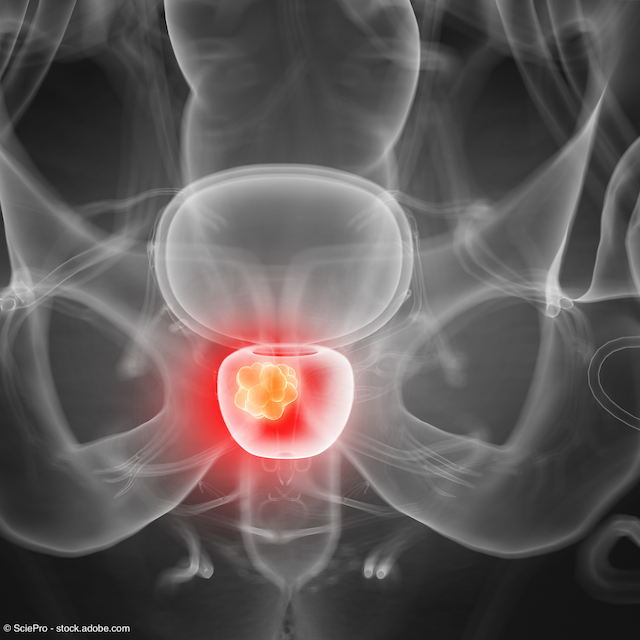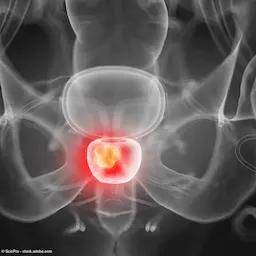News
Article
PSMA-PET by PROMISE criteria shows prognostic value across prostate cancer continuum
Author(s):
“Our PPP nomograms accurately stratify high- vs. low-risk groups for overall survival in early and late stages of prostate cancer and yield better prediction than established clinical risk tools," wrote the authors.
Quantitative and visual nomograms developed using prostate-specific membrane antigen (PSMA)-PET findings by PROMISE criteria (PPP) demonstrated prognostic value for overall survival (OS) across various stages of prostate cancer, according to data presented at the 2024 European Society for Medical Oncology Congress in Barcelona, Spain.1
The study remains ongoing, with a target follow-up duration of 10 years.

According to the authors, “PROMISE criteria were proposed to standardize PSMA-PET reporting.” They also note that PSMA-PET disease extent by PROMISE stage has been associated with oncologic outcomes.1,2 Thus, the PROMISE-PET registry sought to better understand the relationship between PET findings summarized by PROMISE and OS.
The study included patients who underwent PSMA-PET imaging at the Essen University Hospital between 2014 and 2021. Patients were randomly assigned 2:1 to be in the development (n = 1110) or validation (n = 502) cohorts. An additional 802 patients from University Hospitals in Münster, Freiburg, and Dresden, Germany, were also included as an external validation cohort.
Data showed that locoregional lymph node metastases (miN2), distant metastases (miM1a, miM1b pattern, miM1c), tumor volume, and tumor SUVmean were predictors for OS in the quantitative PPP nomogram. In the visual PPP nomogram, predictors included distant metastases and total tumor lesion count.
In the quantitative PPP nomogram, the C-indices, which were used to measure accuracy, were 0.80 and 0.77 in the internal and external validation cohorts, respectively. For the visual PPP nomogram, the c-index was 0.78 in the internal validation cohort and 0.77 for the external validation cohort.
The quantitative PPP nomogram demonstrated superior accuracy to STARCAP at initial staging (n=139), with an area under the curve of (AUC) 0.73 with the PPP nomogram vs. 0.54 with STARCAP (P = .02). The quantitative PPP nomogram was also superior to European Association of Urology (EAU) risk score at biochemical recurrence (n=412; AUC, 0.69 vs. 0.52; P < .001) and National Comprehensive Cancer Network (NCCN) subgroups at any timepoint (n=1534; AUC, 0.81 vs. 0.74; P < .001).
Similarly, the visual PPP nomogram demonstrated superior accuracy vs EAU risk score at biochemical recurrence (n=414; AUC, 0.64 vs. 0.52; P < .001) and vs NCCN subgroups at any time point (n=1544; AUC, 0.79 vs. 0.73; P < .001).
In total, the observational, open registry study included 2414 adult patients. To be eligible for inclusion, patients needed to have biopsy/histologically proven prostate cancer and at least 3-year OS follow-up data available. Additionally, participants should have undergone PSMA-PET for staging or re-staging at any stage. Patients with neuroendocrine prostate cancer or those with a metastasized or disseminated malignancy other than prostate cancer were excluded from the study.2
The primary outcome measure for the study is OS, and the second end point is metastasis-free survival. The study remains ongoing, with a target follow-up duration of 10 years.
Overall, the authors concluded, “Our PPP nomograms accurately stratify high- vs. low-risk groups for overall survival in early and late stages of prostate cancer and yield better prediction than established clinical risk tools. Validation with long-term follow-up is ongoing.”
References
1. Fendler WP, Karpinski M, Hüsing J, et al. PSMA-PET and PROMISE re-define stage and risk in patients with prostate cancer. Presented at: 2024 European Society for Medical Oncology Congress. Barcelona, Spain. September 13-17, 2024. Abstract 1609P. https://s3.eu-central-1.amazonaws.com/m-anage.com.storage.esmo/static/esmo2024_abstracts/1609P.html.pdf
2. PROMISE PET Registry on PSMA-PET and Outcome in Prostate Cancer (PROMISE-PET). ClinicalTrials.gov. Last updated March 20, 2024. Accessed September 19, 2024. https://clinicaltrials.gov/study/NCT06320223
Newsletter
Stay current with the latest urology news and practice-changing insights — sign up now for the essential updates every urologist needs.
















